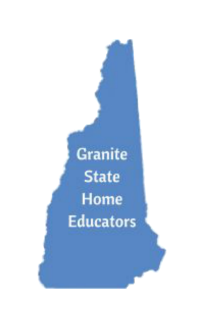Education Savings Accounts (ESAs) will put educational opportunities within reach for low-income children across the Granite State. The NH House Education Committee will vote on an amended version of Senate Bill 193, the proposed ESA bill, on Wednesday, November 8th.
UPDATE — The House Education Committee will vote on Tuesday, November 14th. We have an extra week to make calls to the committee members, urging them to support this critical bill.
Many opposed to expanding educational options forecast doomsday scenarios for public schools. There are two major mistruths about the financial impact of ESAs and choice programs.
First, opponents claim that the ESA will “gut” the district schools, but the reality is that they will barely notice.
Less than 1% of eligible children participate in New Hampshire’s existing choice program, the tax-credit scholarship. Even if 5% of a district’s school population switched out for a different educational option, the district only loses the equivalent of the state funding allocated for that child, roughly $3600. The district keeps 95% of the state funding. The impact is no different than a child moving to another district or enrolling at a different school.
Further, districts keep 100% of local tax dollars allocated for their local public schools. That money stays with the district schools for children no longer educated there. Schools also keep the entirety of any federal grants. That is the equivalent of districts keeping roughly 98% of their total revenue. Does that sound like a gloom-and-doom scenario?
On the expense side, much of public schools’ costs are variable costs in the short run, but all of their costs are variable in the long run. In a report by Dr. Benjamin Scafidi, “The Fiscal Effects of School Choice Programs on Public School Districts.” Table 6, Short-Run Fixed and Variable Costs by State, shows that in New Hampshire, 72.3% percent of total costs are short-run variable costs. That increases with a longer time horizon because all costs are variable in the long run.
Going back to the supposed “doomsday” scenario, even if 5% of a district’s student population withdraws for another educational option, the district would retain approximately 98% of all revenue while 72% of their costs are variable. To illustrate, let’s take a look at the fiscal effect of the ESA on Shireton, a fictional town based on the state’s average per-pupil expenditures ($17,648.76) with a 67% of funds being raised locally or coming from federal grants and 33% coming from the state. Refer to the spreadsheet.
In other words, a 5% reduction in enrollment (and all the associated costs) results in about a 2% reduction in total revenue, on average. This should not present a fiscal dilemma for our public schools, especially since enrollment already fluctuates year to year.
Similar Chicken Little predictions were made about the Education Tax Credit program in 2012 and none of their predictions came true. Empirical studies of choice programs show positive effects (see Table 2 on page 13-14.)
Finally, our state obligation to fund each child’s education does not necessarily mean it must be through one single provider. If a child will thrive at one learning environment over another, shouldn’t our efforts support those choices that produce the better outcomes?
The House Education Committee will vote on SB 193 on Wednesday, November 8th. Encourage them to empower low-income children to access an educational opportunity that fits their individual needs. Education Savings Accounts are a win-win for students, schools, and our state.
UPDATE — The House Education Committee will vote on Tuesday, November 14th. We have an extra week to make calls to the committee members, urging them to support this critical bill.
2021 Home Education Enrollment
| Participating Agencies | 2021 | 2020 | 2019 | 2018 | 2017 |
| Public Districts | 3,842 | 5,809 | 2,952 | 3,005 | 2,865 |
| NH DOE | 105 | 84 | 3 | 12 | 10 |
| Private Schools | 238 | 217 | 0 | 235 | 0 |
| TOTAL | 4,185 | 6,110 | 2,955 | 3,252 | 2,875 |

